No products in the cart.
NEWS
Your Backyard Orchard: A Guide to Growing Fruit Trees from Seed
Imagine plucking fresh fruit from a tree you grew yourself, right in your own backyard. What if that journey started with the very seed from a piece of fruit you enjoyed today? Giving life to a new tree from a simple seed or pit is a deeply rewarding experience, a testament to nature’s incredible power. While it requires dedication and patience, the satisfaction of nurturing a seedling into a fruit-bearing tree is unparalleled for any gardening enthusiast. At Biogarden.asia, we believe in fostering this connection with nature, empowering you to start your own fruitful adventure.
It’s fascinating to learn that many common fruits you find in stores – apples, peaches, citrus, and more – can indeed be started from their seeds or pits. However, there’s a crucial piece of wisdom every aspiring seed-to-tree gardener should know: the tree you grow likely won’t produce fruit exactly like the parent fruit you took the seed from. This is because most commercial fruit varieties are the result of cross-pollination between two different parent trees, creating seeds with a unique genetic mix. Professional growers typically use techniques like grafting, attaching a piece of a desired variety onto established rootstock, to ensure the resulting fruit is identical. Planting from seed is more of a genetic lottery – you’ll get a tree of the same type, but the fruit it produces could be subtly or significantly different. Think of it as creating a brand new, potentially delicious, variety! This unpredictability is part of the fun and discovery process when growing fruit trees from seed.
Essential Steps for Planting Fruit Seeds and Pits
Starting fruit trees from seed shares many similarities with growing other plants, but some fruits have specific needs that require a little extra attention. Getting these first steps right gives your potential tree the best chance at life.
One key factor, especially for fruits originating from temperate climates, is something called cold stratification.
Understanding Cold Stratification
Fruits like apples, peaches, and pears, which are native to regions with cold winters, have seeds that have evolved to germinate only after experiencing a prolonged period of cold temperatures. This natural process, known as cold stratification, prevents seeds from sprouting prematurely in a warm spell during autumn, only to be killed by subsequent hard freezes.
To replicate this indoors, you can place cleaned seeds in a plastic bag with a moist paper towel or a small amount of damp peat moss or vermiculite. Seal the bag and store it in the refrigerator for the recommended duration for your specific fruit. Alternatively, you can plant the seeds directly outdoors in the fall, allowing nature to handle the cold stratification over the winter months. This works best in climates where winter temperatures are reliably cold for an extended period.
Handling Tropical Fruit Seeds
In contrast to their temperate counterparts, seeds from tropical fruits do not require cold stratification. These can be planted any time of year. If you live in a region with a cold climate, growing tropical fruit trees from seed is still possible! The solution is container gardening. Start your seedlings in pots and plan to move them outdoors during the warm summer months and bring them back inside before temperatures drop in the fall.
Working with Stone Fruit Pits
Stone fruits like peaches and plums have a hard outer pit protecting the seed inside. Gently cracking this hard shell can significantly improve germination rates. You can use a nutcracker for this, applying just enough pressure to crack the outer casing without damaging the delicate seed embryo within. This mimics the process that might happen naturally from freezing and thawing cycles in the ground.
Soaking Smaller Seeds
For fruits with smaller seeds, a simple overnight soak in water (or up to 48 hours for some) before planting can help soften the seed coat and encourage faster germination. This hydration sends a signal to the embryo that conditions are favorable for growth.
When planting seeds or pits directly into the ground outdoors, especially if you have local wildlife like squirrels, consider covering the planting area with wire mesh. Push the edges into the soil to prevent curious critters from digging up and potentially eating your nascent fruit trees.
Specific Fruits: Planting & Care from Seed
Let’s explore how to start some popular fruits from the seeds you might otherwise discard.
Apples: Planting & Care from Seed
Apples are a staple fruit, and growing an apple tree from seed can be an exciting experiment. While you won’t get a clone of the parent apple, you might discover a unique variety with interesting traits. Regardless of the fruit, you’ll have a beautiful, productive tree for your landscape.
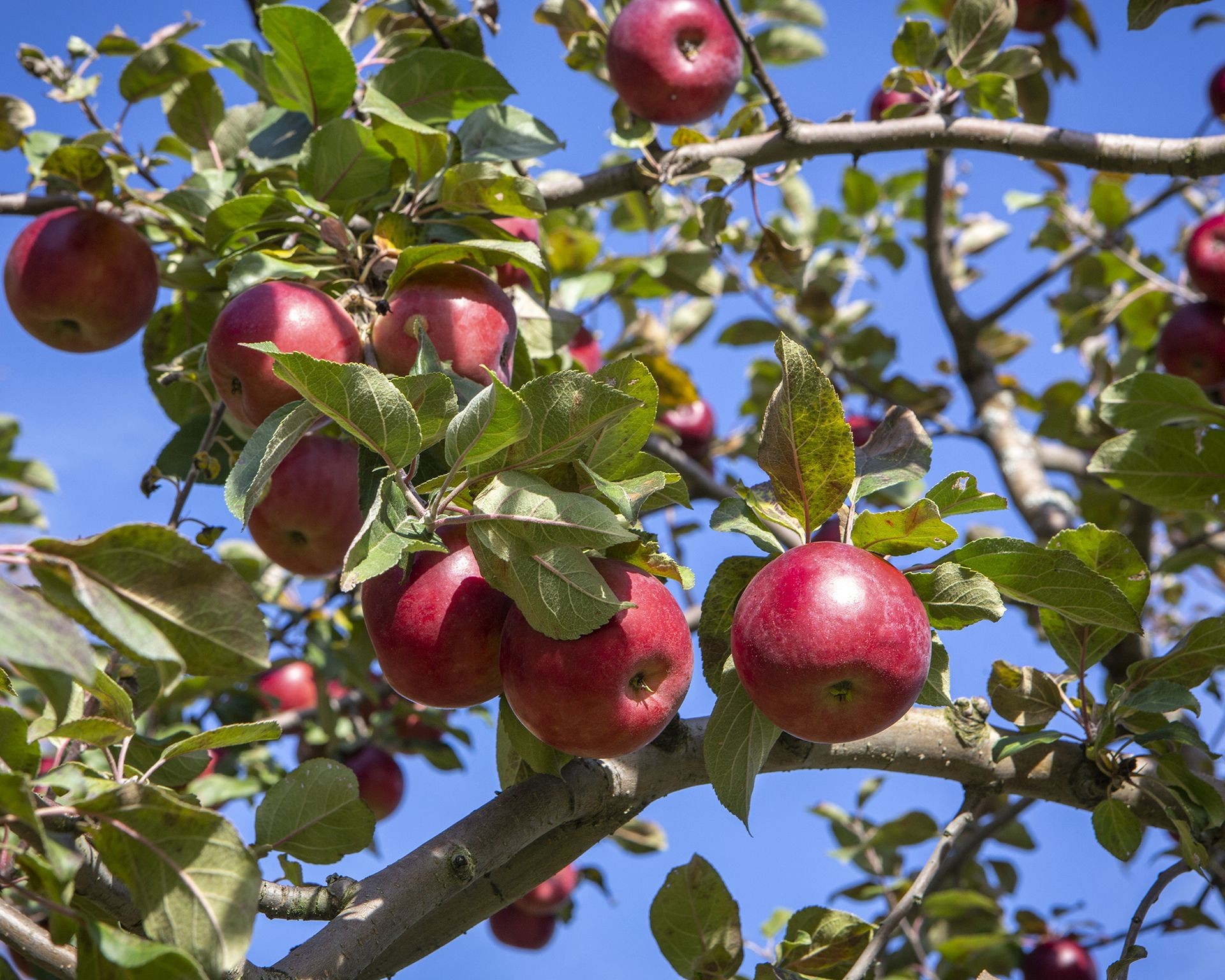 Mature apple tree branches heavy with ripe red apples
Mature apple tree branches heavy with ripe red apples
To start apple seeds, cold stratification is essential. You can plant them directly outdoors in the fall to allow winter temperatures to stratify them naturally. If you prefer starting indoors, place cleaned seeds in a bag with moist paper towel in the refrigerator for at least 80 days. Plant them in pots or the ground in the spring after this chilling period. It’s wise to plant several seeds, as not all may germinate. Apple trees thrive in USDA zones 3-8 but require patience; they can take anywhere from five to ten years to begin bearing fruit.
Citrus: Planting & Care from Seed
Growing citrus trees like lemons, oranges, and grapefruits from seed is surprisingly straightforward and can bring a touch of the tropics to your home. In warmer climates (USDA zones 8-11), citrus trees can be grown outdoors year-round. For those in cooler regions, container growing is the answer, allowing you to move them indoors during colder months.
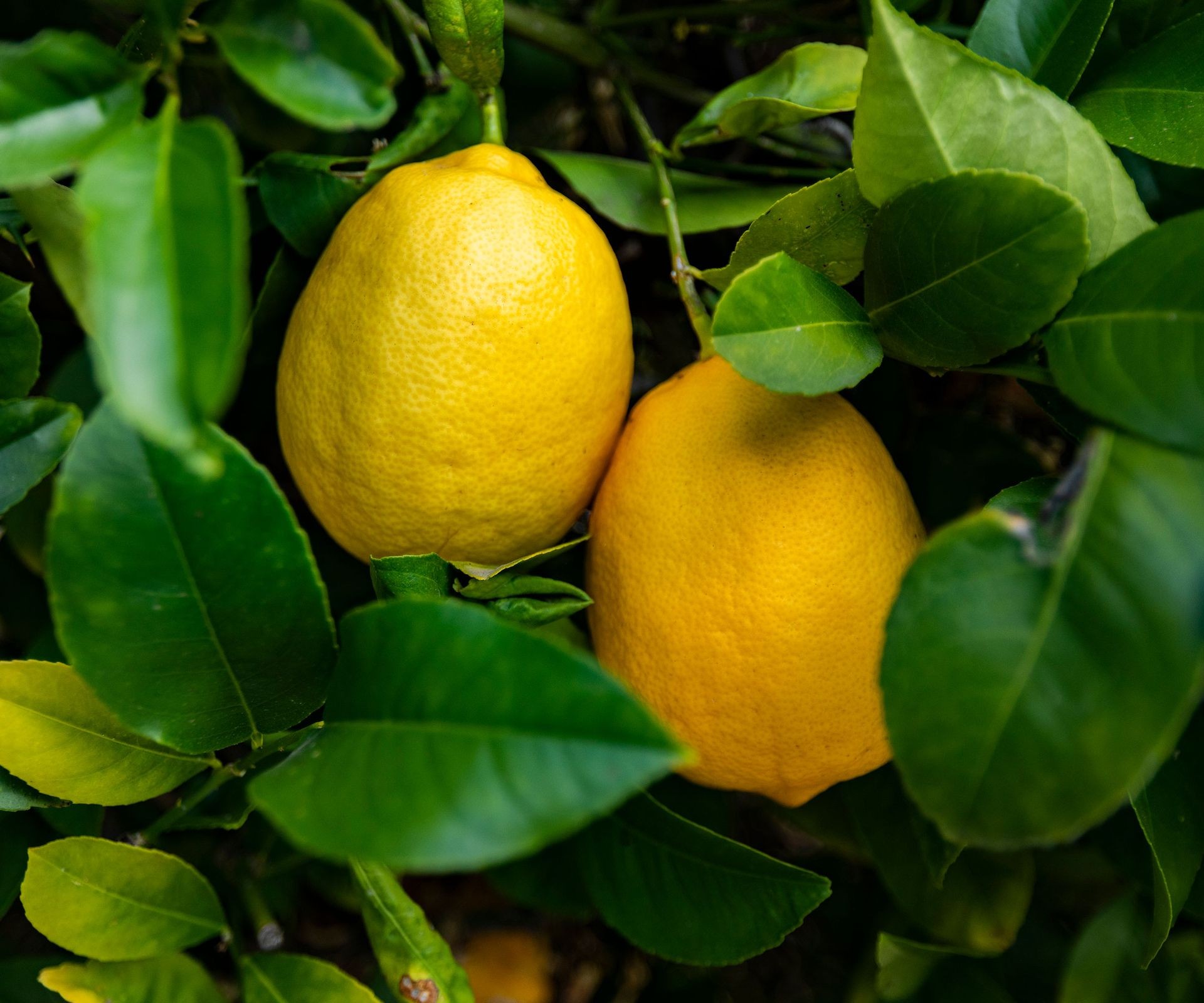 Healthy Meyer lemon tree thriving in a patio container
Healthy Meyer lemon tree thriving in a patio container
Citrus seeds do not need cold stratification. Simply clean the seeds of any fruit pulp and plant them directly. Using small pots and planting several seeds is a good strategy, thinning out the weakest seedlings as they grow. Keep the soil consistently moist and provide plenty of warmth and bright, sunny light for successful germination and growth. Be prepared for a long wait – it can take up to ten years for a seed-grown citrus tree to produce fruit.
Peaches and Plums: Planting & Care from Seed
Peaches and plums, both classic stone fruits, are popular choices for growing from seed, keeping in mind they won’t be genetically identical to the parent. These trees are generally well-suited for USDA zones 4 to 9.
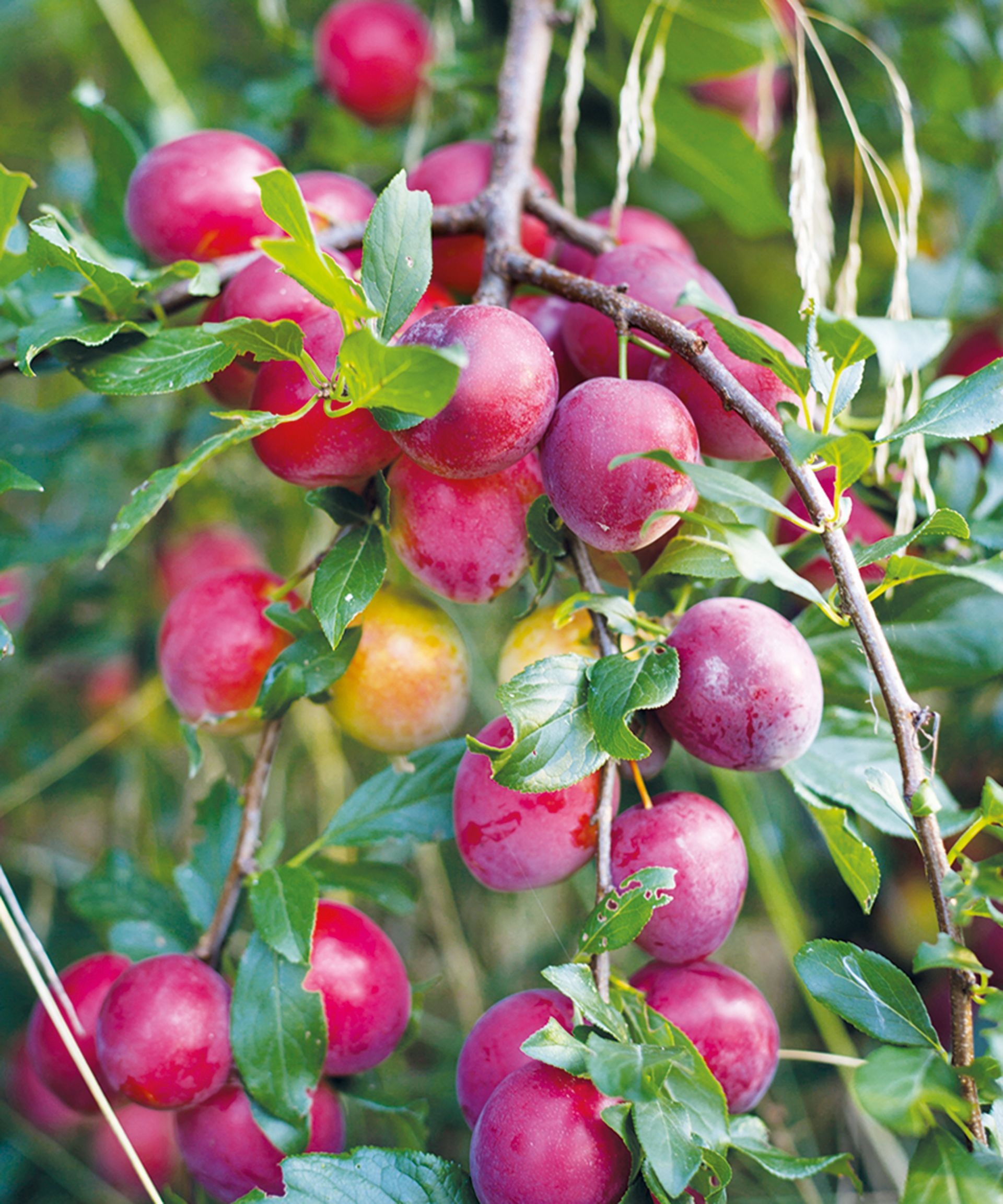 Cluster of deep purple Victoria plums hanging from a plum tree branch
Cluster of deep purple Victoria plums hanging from a plum tree branch
Begin by thoroughly cleaning the pits to remove all fruit residue. As with apples, cold stratification is necessary. You can stratify pits indoors in the refrigerator (plums need 60-90 days, peaches 98-105 days) or plant them outdoors in the fall. Remember to gently crack the outer shell of the pit before stratifying or planting to aid germination. If stratifying indoors, keep the paper towel or medium moist. Once germinated or planted in spring, protect young seedlings from animals with mesh covers. Anticipate a wait of three to six years before your peach or plum tree yields its first harvest.
Avocado: Planting & Care from Seed
Sprouting an avocado pit is a classic gardening project, especially fun for beginners, though it requires a bit more specific handling. Avocado trees thrive outdoors in USDA zones 8-11. In cooler areas, they make attractive, leafy houseplants when grown from seed, though they are unlikely to produce fruit without specific care and conditions.
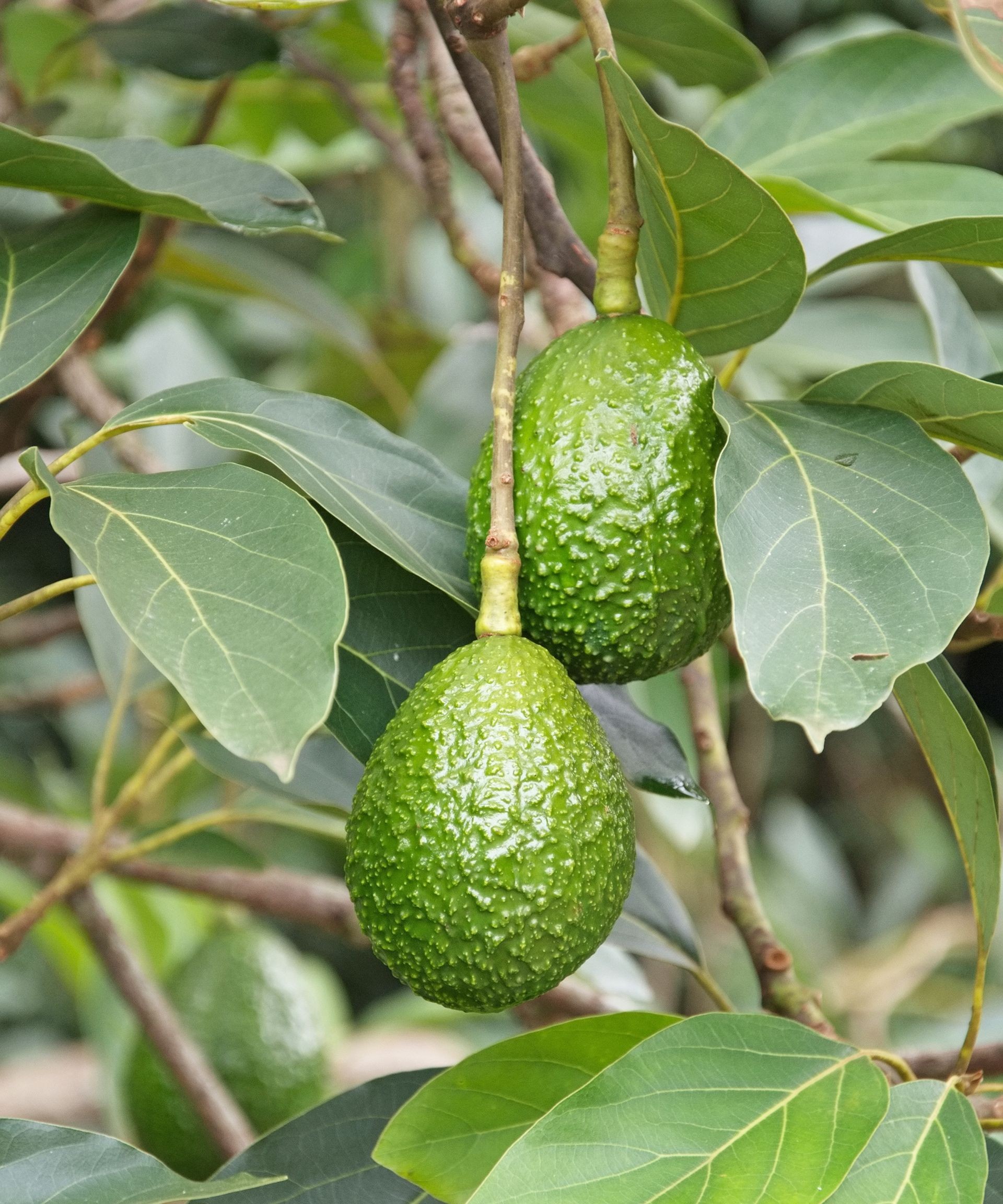 Several green avocados ripening on a young avocado tree
Several green avocados ripening on a young avocado tree
Start with a clean, dry pit. Gently peel off the brown skin, as this can harbor mold. The traditional method involves suspending the bottom half of the pit in a glass of water using toothpicks. Place the glass in a warm spot with indirect light and replenish the water as needed. Patience is key; it can take anywhere from a few weeks to several months for a root to emerge. Once a significant root forms, you can plant the pit in a container filled with potting mix, leaving the top portion of the pit exposed. Sprouts may appear within a month or two after planting in soil, but fruiting is a long-term goal, often taking seven to ten years.
Pears: Planting & Care from Seed
Growing pear trees from seed is another viable option, suitable for gardeners in USDA zones 4-8. Like their apple cousins, pear seeds require cold stratification for successful germination.
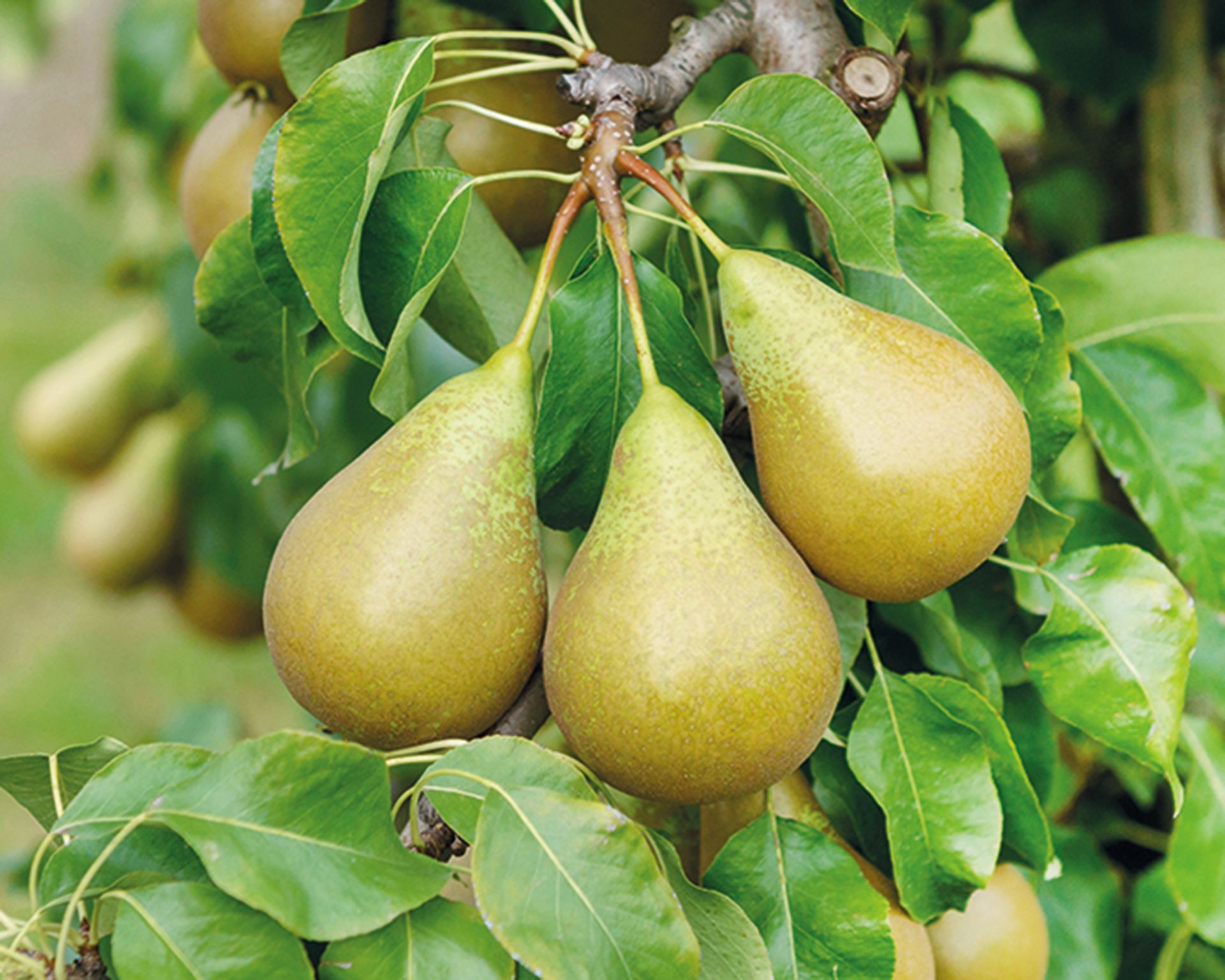 Bumper crop of green and brown Conference pears growing on a tree
Bumper crop of green and brown Conference pears growing on a tree
Stratify pear seeds indoors in a moist bag in the refrigerator or plant them directly outdoors in the fall. They need at least 80 days of cold exposure. Soaking the seeds overnight before planting can help kickstart the germination process. Whether planting in containers or the ground, provide well-draining soil and adequate sunlight. You can try seeds from any pear variety, including Asian pears. Similar to apples, expect to wait three to ten years for your seed-grown pear tree to start producing fruit.
Guava: Planting & Care from Seed
Guava is a delicious tropical fruit that can be easily grown from seed, making it a rewarding project. It thrives outdoors in USDA zones 9-11 and can be grown as a charming container plant in colder climates.
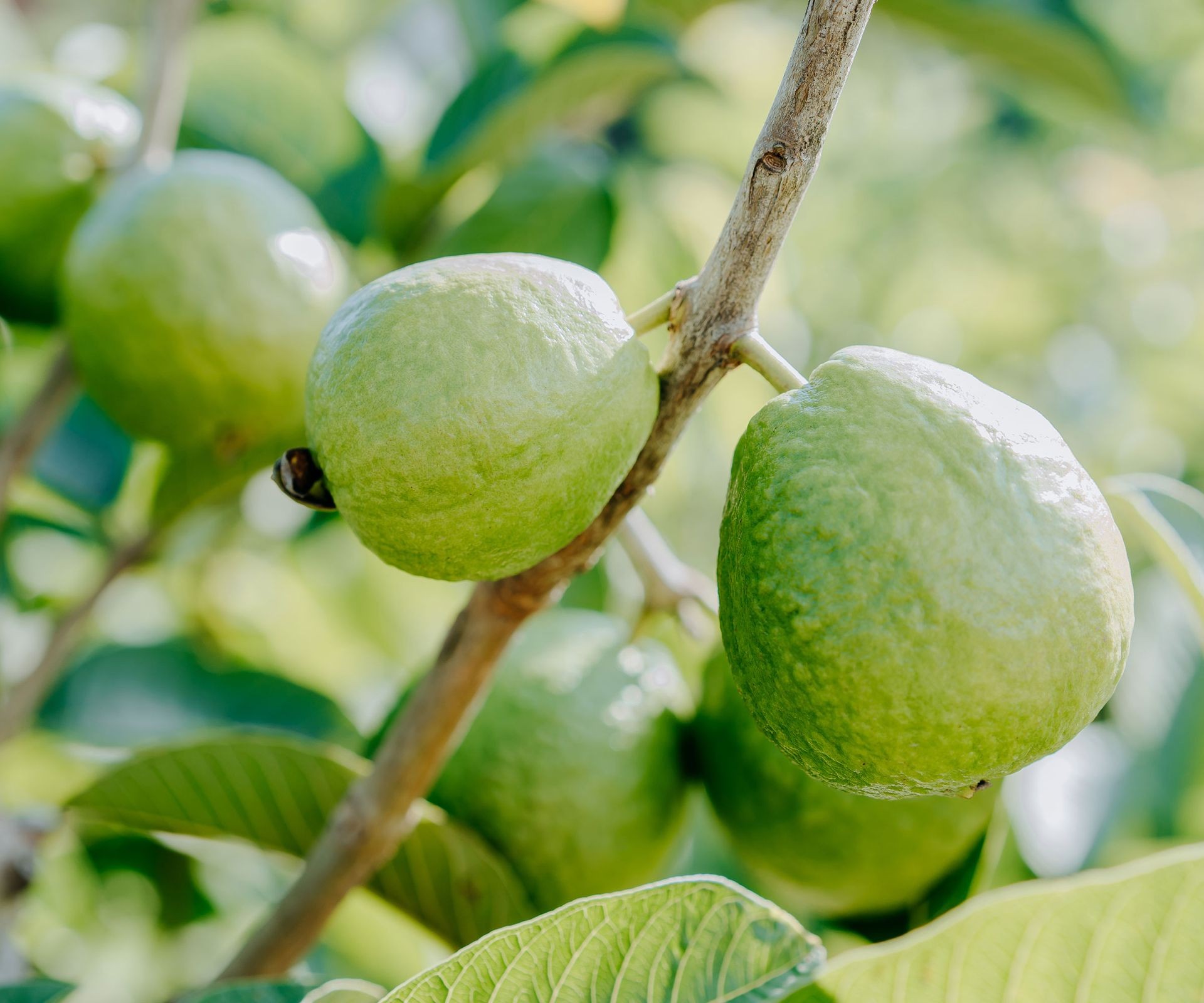 Round, yellow-green guava fruits hanging from a tropical guava tree
Round, yellow-green guava fruits hanging from a tropical guava tree
To grow guava from seed, remove and clean the small seeds from the fruit. Unlike temperate fruits, guava seeds do not need cold stratification. Soak the seeds for 24 hours before planting them in well-draining soil, either in the ground or in containers. Guava seedlings need plenty of full sunlight and warmth. With consistent care and suitable conditions, including rich, moist soil, your guava tree could begin producing fruit in about eight years.
Your Fruiting Adventure Begins!
Growing fruit trees from seeds or pits is truly a journey of patience, observation, and discovery. While it’s important to manage expectations regarding the exact fruit variety, the process itself is incredibly rewarding. You’re not just growing a tree; you’re cultivating life and potentially creating something entirely new.
Giving your young fruit tree the best possible start is crucial for its long-term health and future productivity. Healthy soil, proper nutrients, and protection from pests are key. At Biogarden.asia, we offer a range of natural and organic products designed to support robust plant growth from seedling to maturity. Consider exploring our selection of soil amendments and fertilizers specifically formulated for fruit trees to nurture your new green companions. Embark on this exciting gardening adventure, and perhaps you’ll soon be enjoying fruit from trees you started yourself!



